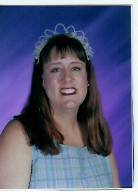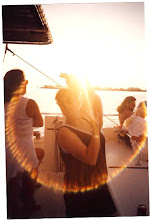
Murphy, J. (1995). The great fire. New York: Scholastic Books.
Book Type/Pages:
Chapter/ 144 pages
Grade Level:
Fifth through twelfth grades
Curriculum Links:
Social Studies
Author Credibility:
Jim Murphy has written many award winning books. In this book he acknowledges the Art Institute of Chicago, the University of Chicago Libraries, the Chicago Architecture Foundation, the Chicago Historical Society, the Chicago Public Library, and colleagues that fact checked his manuscripts.
Awards:
Newberry Honor Book
Boston Globe-Horn Book Nonfiction Honor Book Award
Orbis Pictus Award
ALA Notable Children’s Book
ALA Best Book for Young Adults
ALA Quick Pick for Reluctant Young Adult Readers
CBC/NCSS Notable Children’s Trade Book in the Field of Social Studies
Horn Book Fanfare Book
Bulletin of the Center for Children’s Books Blue Ribbon Book
Book Links Best Books of 1995
Booklist Editor’s Choice
School Library Journal Best Books of the Year
Publishers Weekly Best Books for 1995
Parenting Magazine’s Best Children’s Books of 1995
Parenting’s Reading Magic Award 1995
New York Library’s 100 Best Children’s Books for Reading and Sharing
Book Summary:
This book is about the Great Fire of Chicago that began on Sunday night, October 8, 1871. The story is told in third person and follows several people during their quest to survive the fire. The fire consumed miles of Chicago, including its downtown area. Most of the smaller, lower income homes were consumed. Many factors contributed to the spread of the fire: high wind, dry conditions, wood structures, and unorganized fire departments. Many lost their lives and many more lost their homes during this tragedy.
National/State Standards:
National Social Studies Standards:
Time, Continuity, and Change
Individual Development and Identity
Individuals, Groups, and Institutions
Illustrations/Graphics:
The illustrations of this book are from varied sources. Some are from the author’s collection and some are from the Chicago Historical Society. All appear to be in chalk or pencil and have a sepia brown tone. Illustrations are interspersed throughout each chapter. A caption appears with each illustration. There are a few black and white photographs in the book.
Access Features:
Important access features in this book include acknowledgments, a table of contents, an introduction, maps throughout each chapter, bibliography and sources, and an index.
Writing Style:
The writing style of this book was informal and conversational. Murphy allows us to witness the terror of this tragedy and feel connected to the characters.
Use in My Classroom:
I would use this in my classroom in a variety of units. It could be used as a part of fire prevention studies, studies of cities and their design, and as a part of historic elements in the nineteenth century.
My Response to the Book:
I really liked this book. I was not interested in the topic initially, but once I started reading it, I found myself very engaged. I was reluctant to stop reading at our assigned stopping places. This is definitely a book I would read with students.
Related Texts:
Other books by Jim Murphy:
An American Plague: The True and Terrifying Story of the Yellow Fever Epidemic of 1793
Blizzard: The Storm That Changed America
The Boys’ War: Confederate and Union Soldiers Talk about the Civil War
Book Type/Pages:
Chapter/ 144 pages
Grade Level:
Fifth through twelfth grades
Curriculum Links:
Social Studies
Author Credibility:
Jim Murphy has written many award winning books. In this book he acknowledges the Art Institute of Chicago, the University of Chicago Libraries, the Chicago Architecture Foundation, the Chicago Historical Society, the Chicago Public Library, and colleagues that fact checked his manuscripts.
Awards:
Newberry Honor Book
Boston Globe-Horn Book Nonfiction Honor Book Award
Orbis Pictus Award
ALA Notable Children’s Book
ALA Best Book for Young Adults
ALA Quick Pick for Reluctant Young Adult Readers
CBC/NCSS Notable Children’s Trade Book in the Field of Social Studies
Horn Book Fanfare Book
Bulletin of the Center for Children’s Books Blue Ribbon Book
Book Links Best Books of 1995
Booklist Editor’s Choice
School Library Journal Best Books of the Year
Publishers Weekly Best Books for 1995
Parenting Magazine’s Best Children’s Books of 1995
Parenting’s Reading Magic Award 1995
New York Library’s 100 Best Children’s Books for Reading and Sharing
Book Summary:
This book is about the Great Fire of Chicago that began on Sunday night, October 8, 1871. The story is told in third person and follows several people during their quest to survive the fire. The fire consumed miles of Chicago, including its downtown area. Most of the smaller, lower income homes were consumed. Many factors contributed to the spread of the fire: high wind, dry conditions, wood structures, and unorganized fire departments. Many lost their lives and many more lost their homes during this tragedy.
National/State Standards:
National Social Studies Standards:
Time, Continuity, and Change
Individual Development and Identity
Individuals, Groups, and Institutions
Illustrations/Graphics:
The illustrations of this book are from varied sources. Some are from the author’s collection and some are from the Chicago Historical Society. All appear to be in chalk or pencil and have a sepia brown tone. Illustrations are interspersed throughout each chapter. A caption appears with each illustration. There are a few black and white photographs in the book.
Access Features:
Important access features in this book include acknowledgments, a table of contents, an introduction, maps throughout each chapter, bibliography and sources, and an index.
Writing Style:
The writing style of this book was informal and conversational. Murphy allows us to witness the terror of this tragedy and feel connected to the characters.
Use in My Classroom:
I would use this in my classroom in a variety of units. It could be used as a part of fire prevention studies, studies of cities and their design, and as a part of historic elements in the nineteenth century.
My Response to the Book:
I really liked this book. I was not interested in the topic initially, but once I started reading it, I found myself very engaged. I was reluctant to stop reading at our assigned stopping places. This is definitely a book I would read with students.
Related Texts:
Other books by Jim Murphy:
An American Plague: The True and Terrifying Story of the Yellow Fever Epidemic of 1793
Blizzard: The Storm That Changed America
The Boys’ War: Confederate and Union Soldiers Talk about the Civil War



















No comments:
Post a Comment